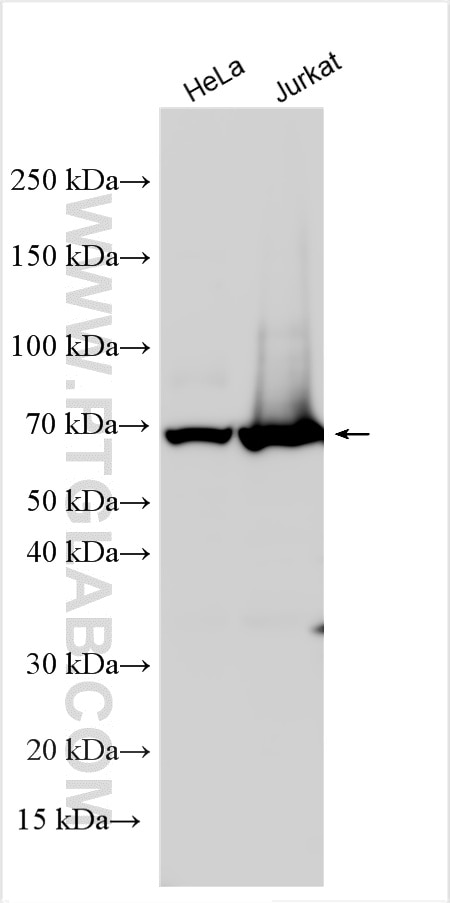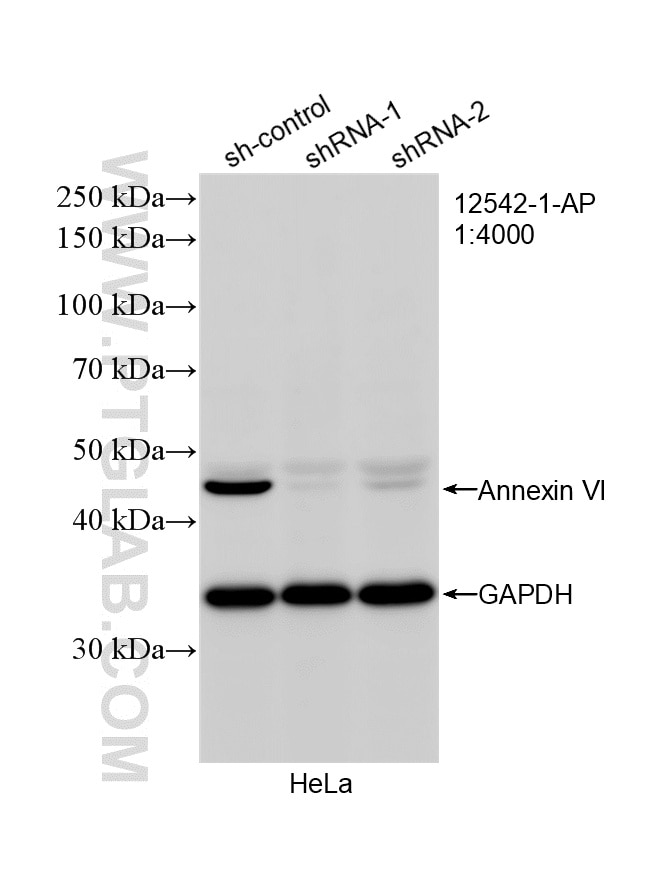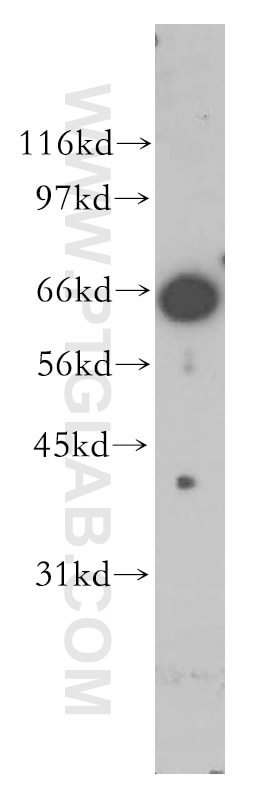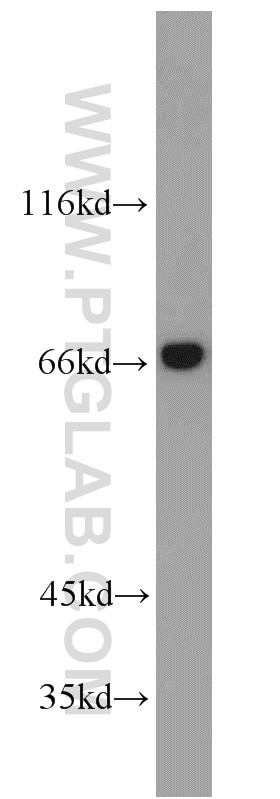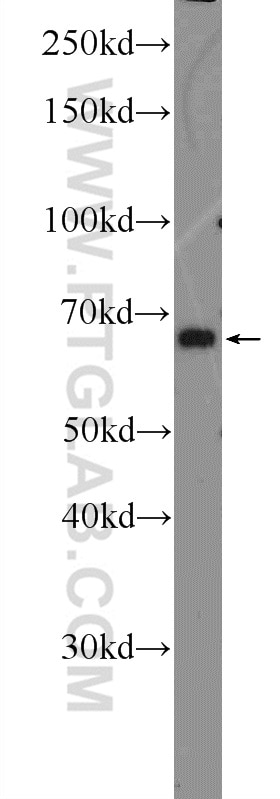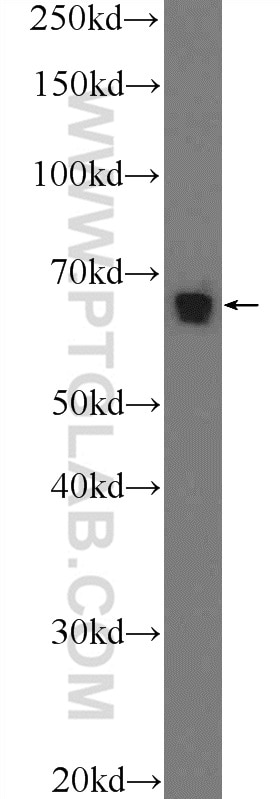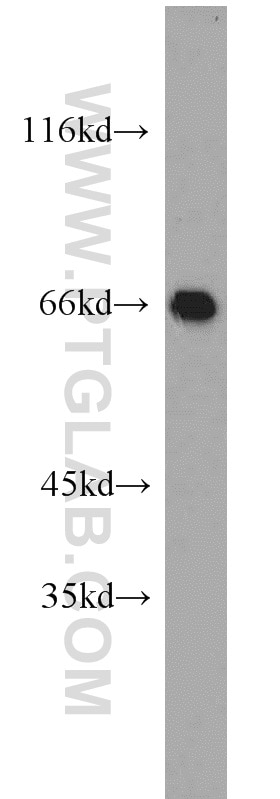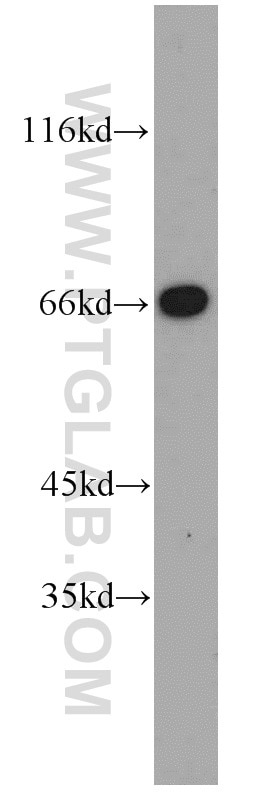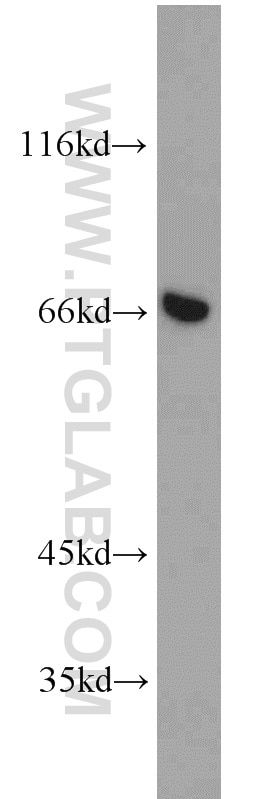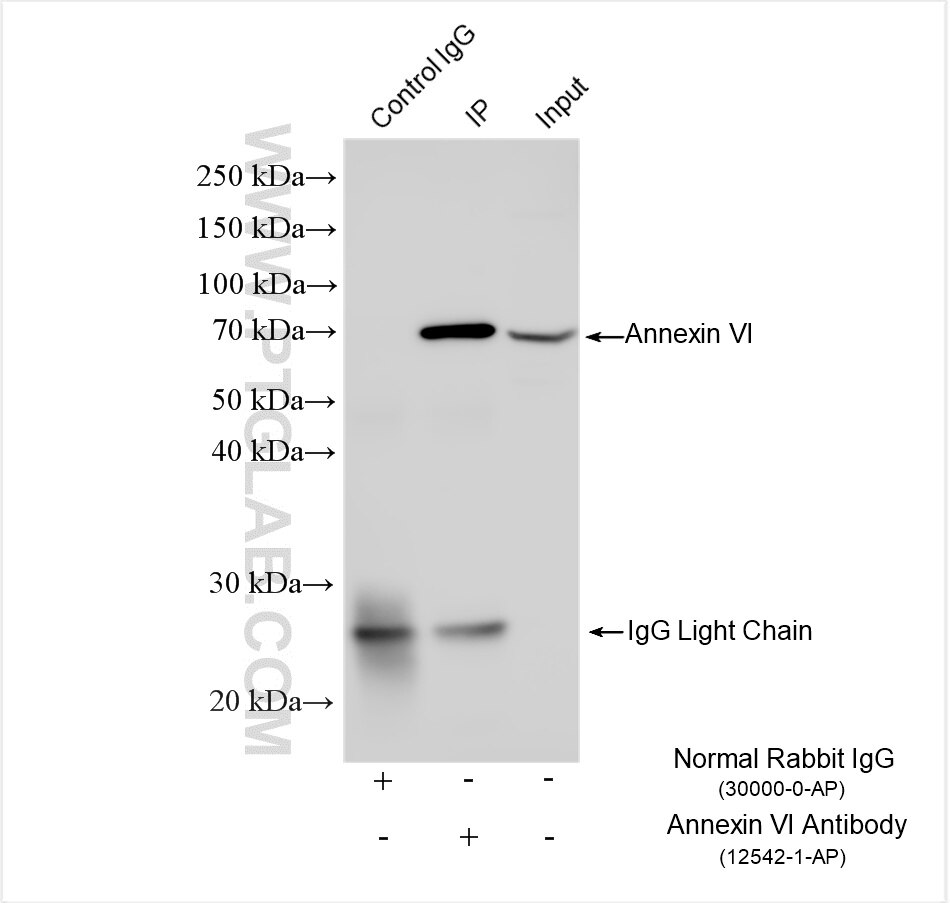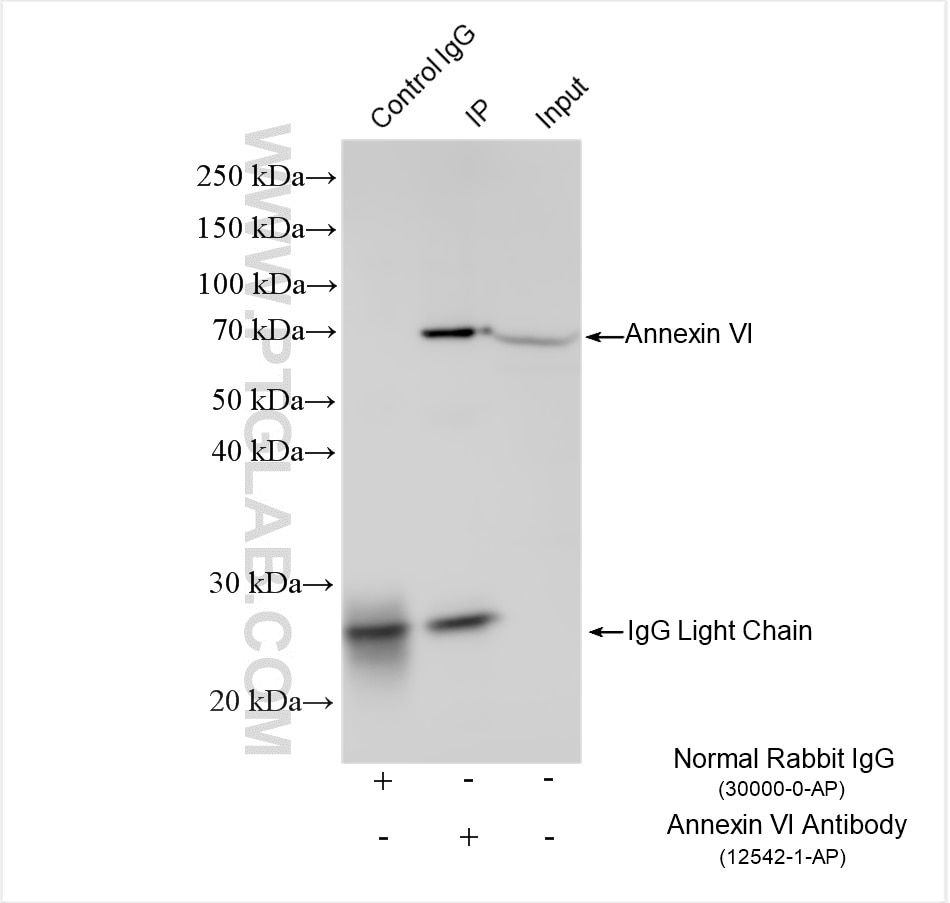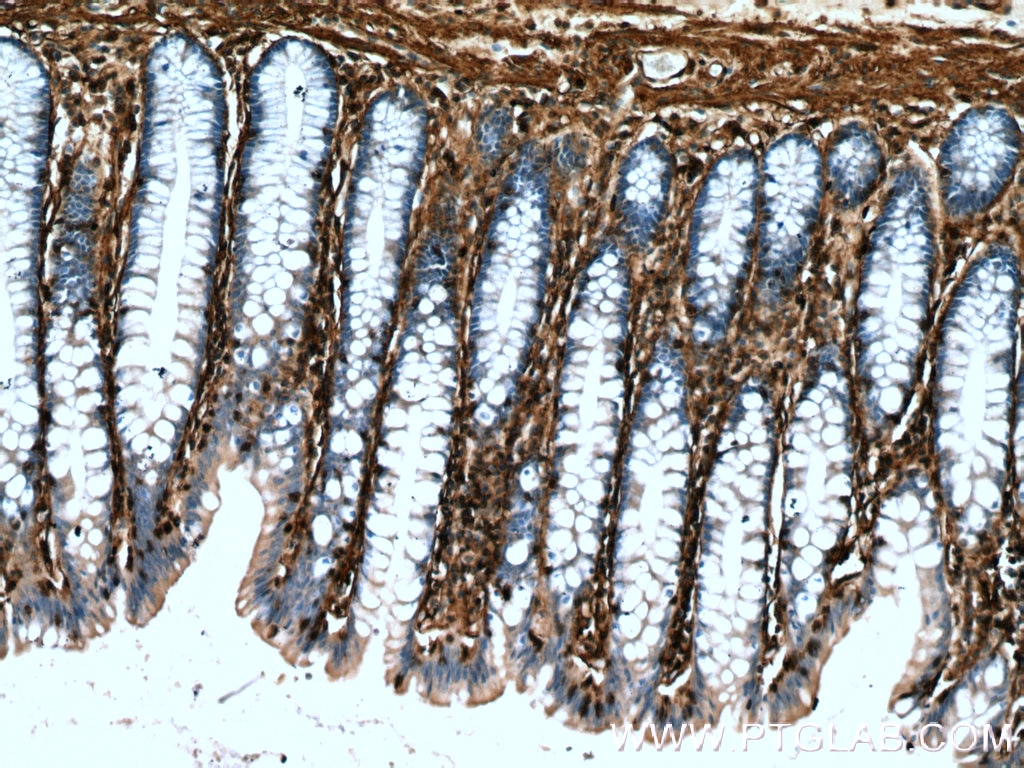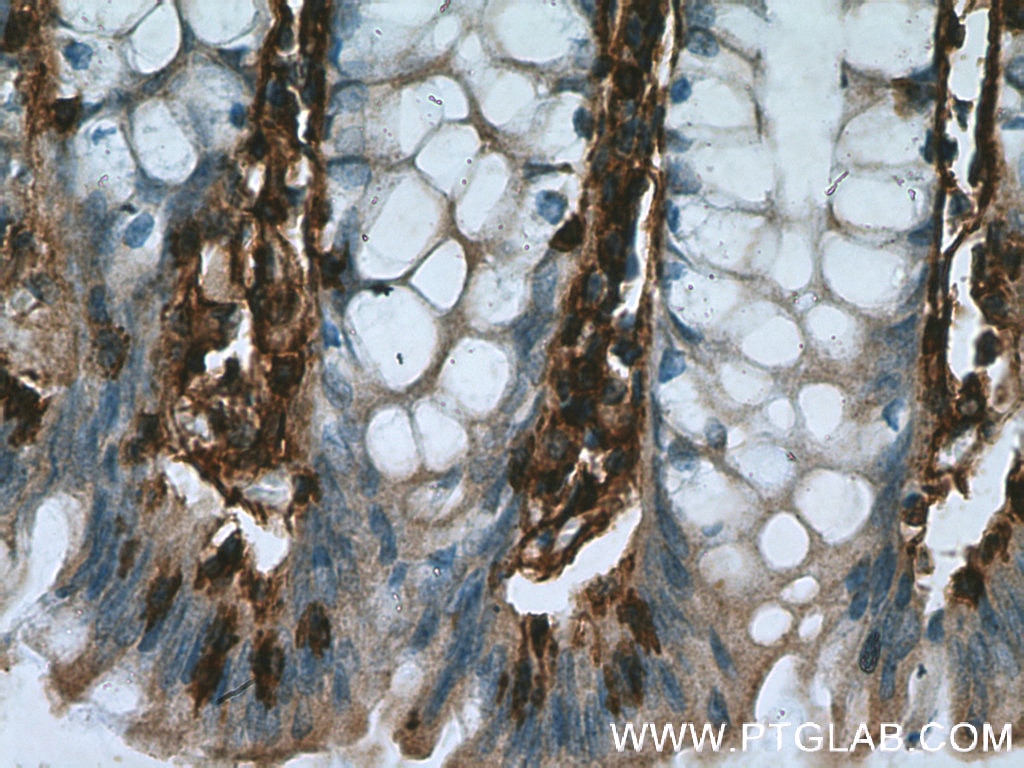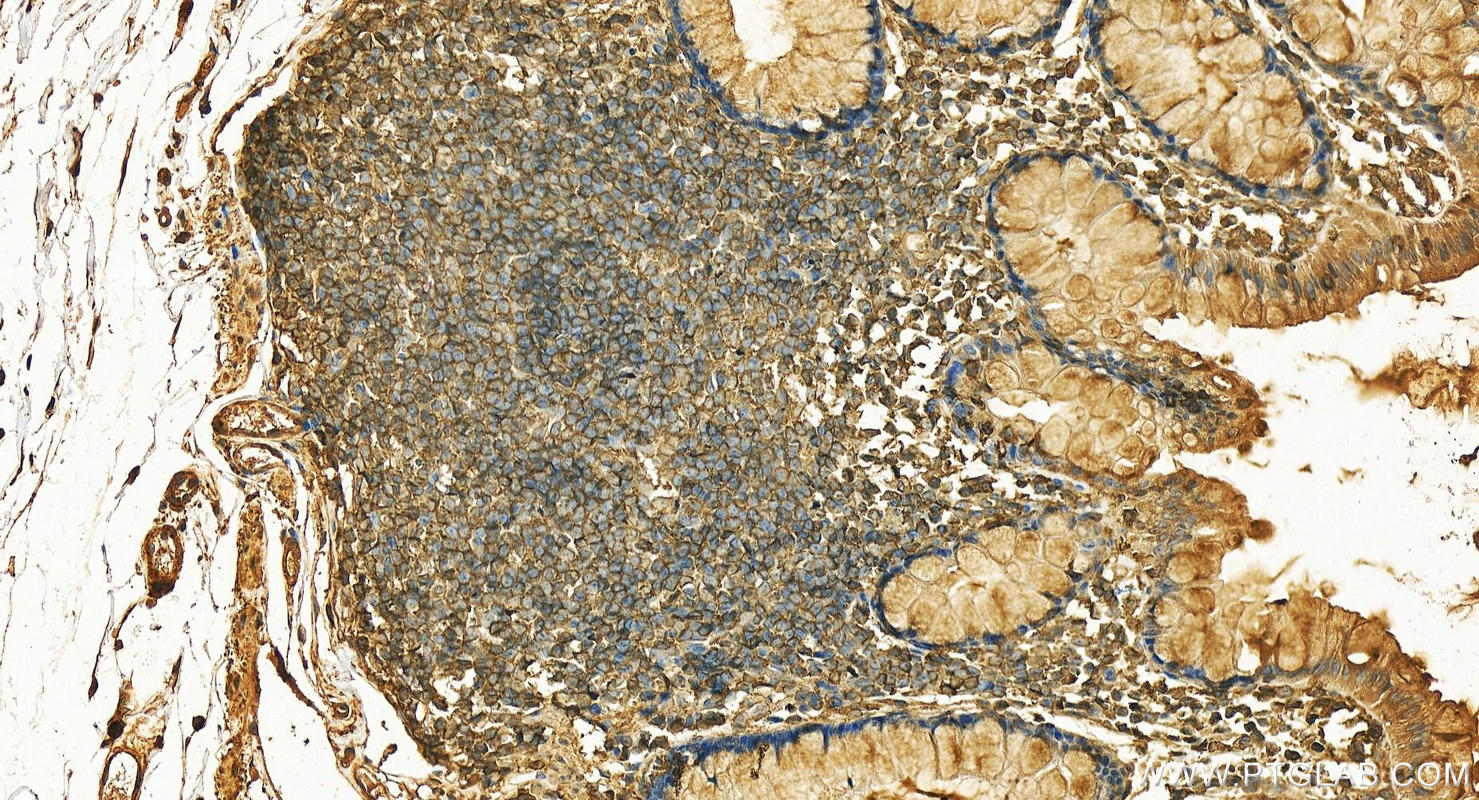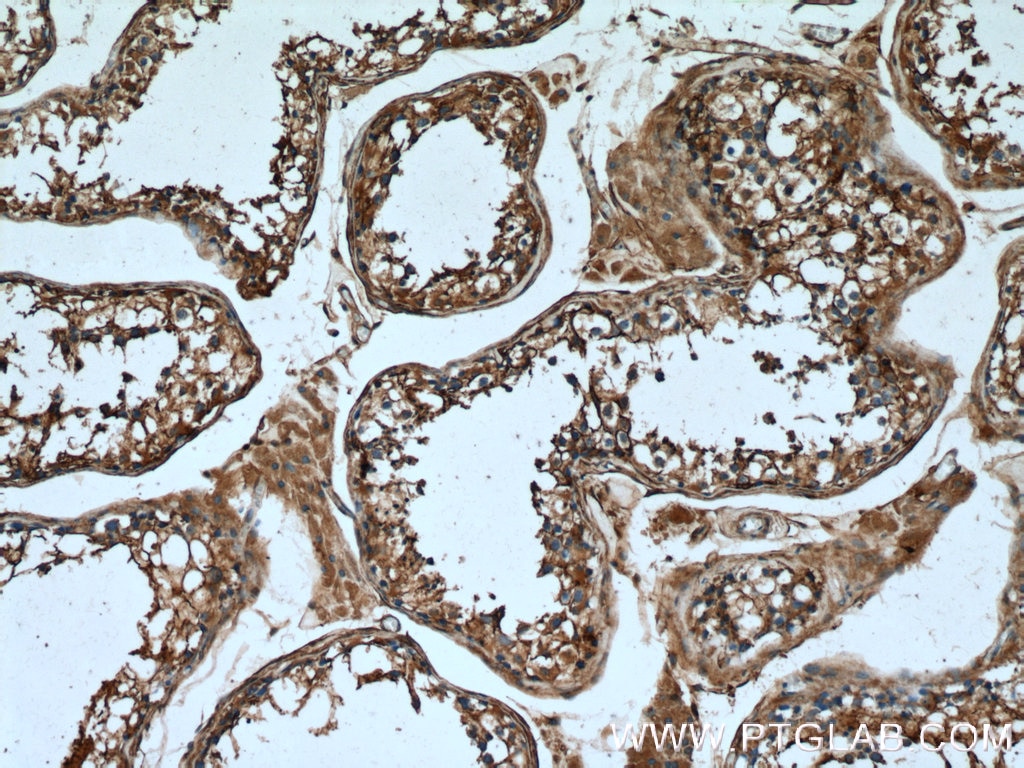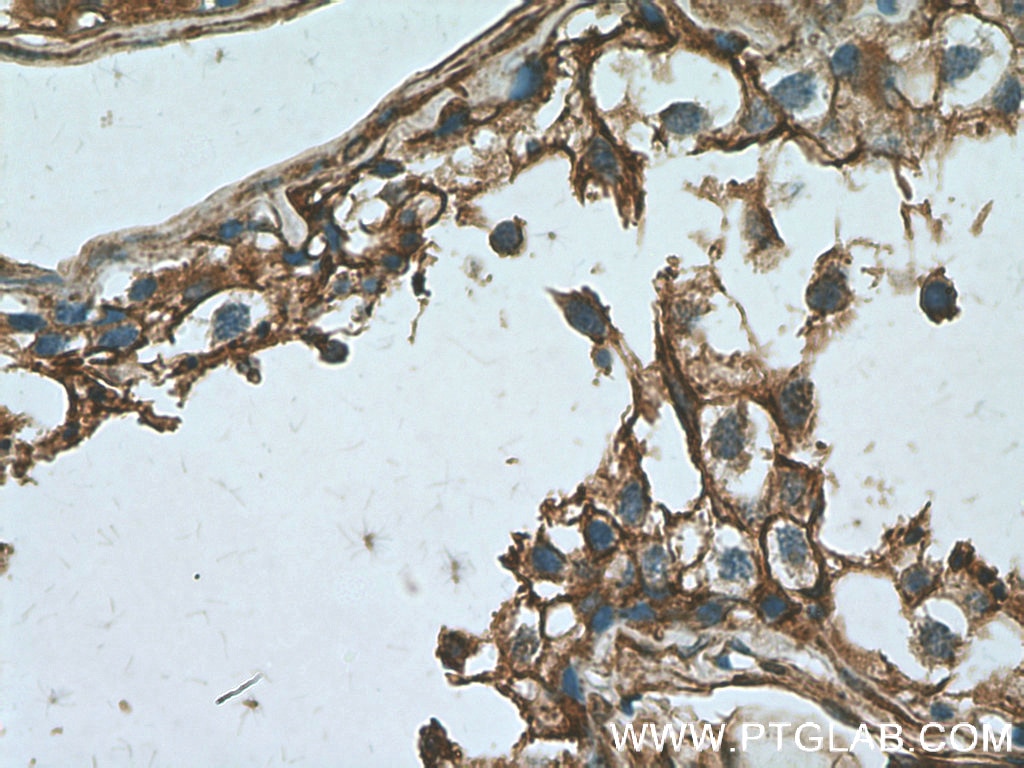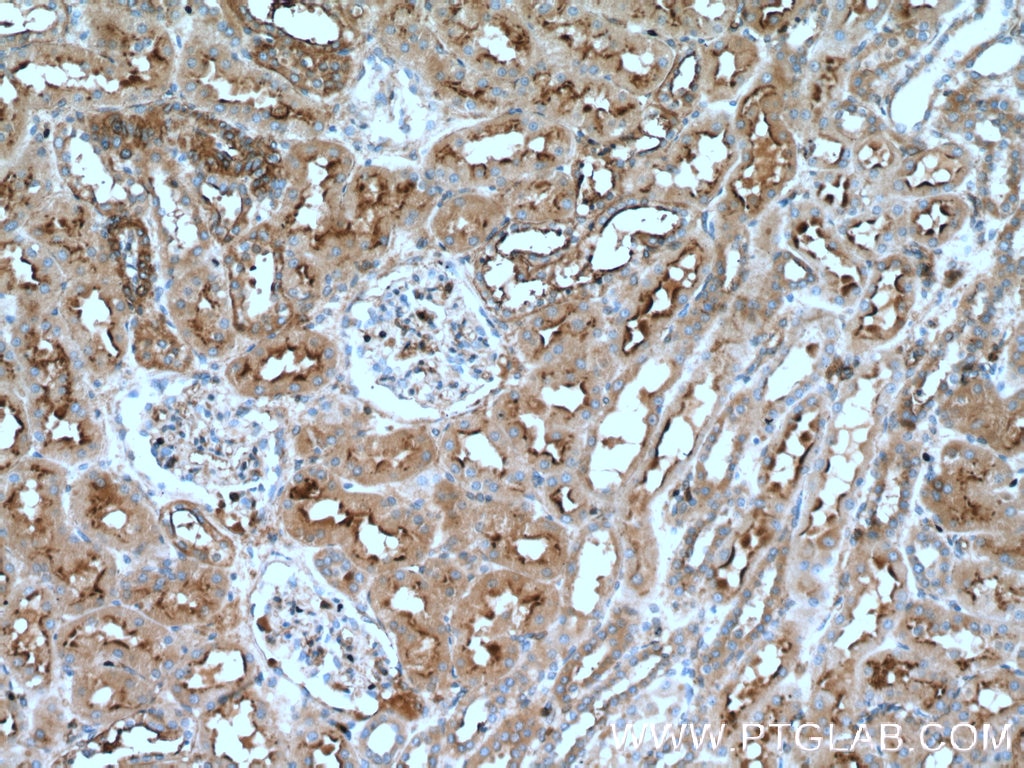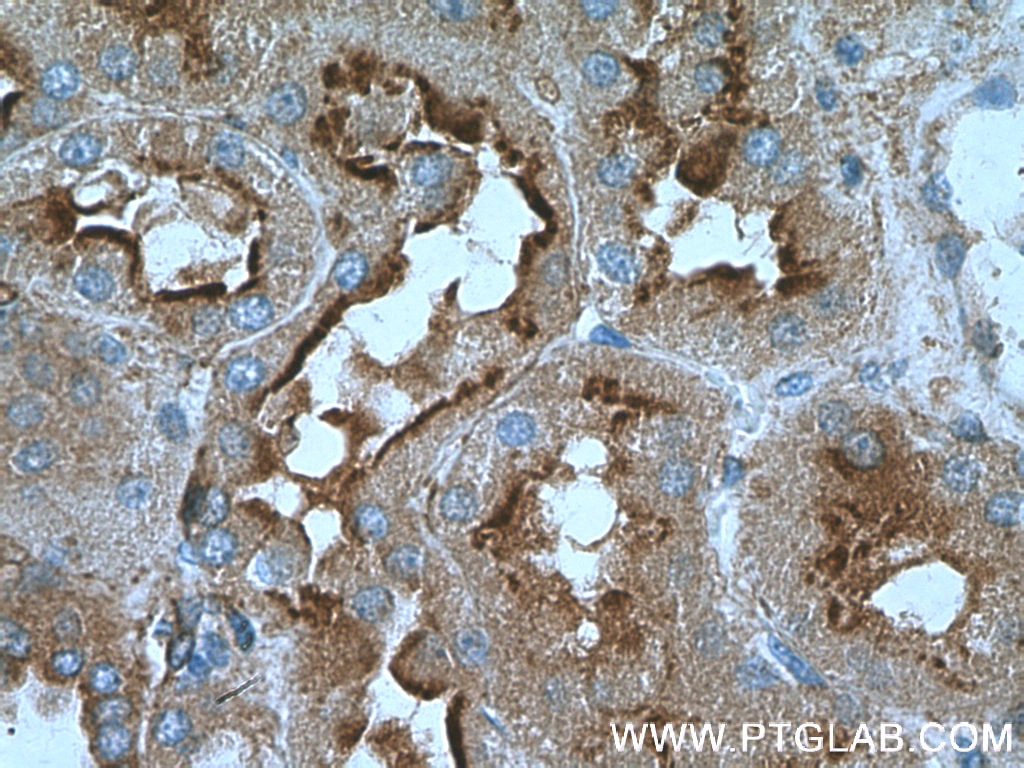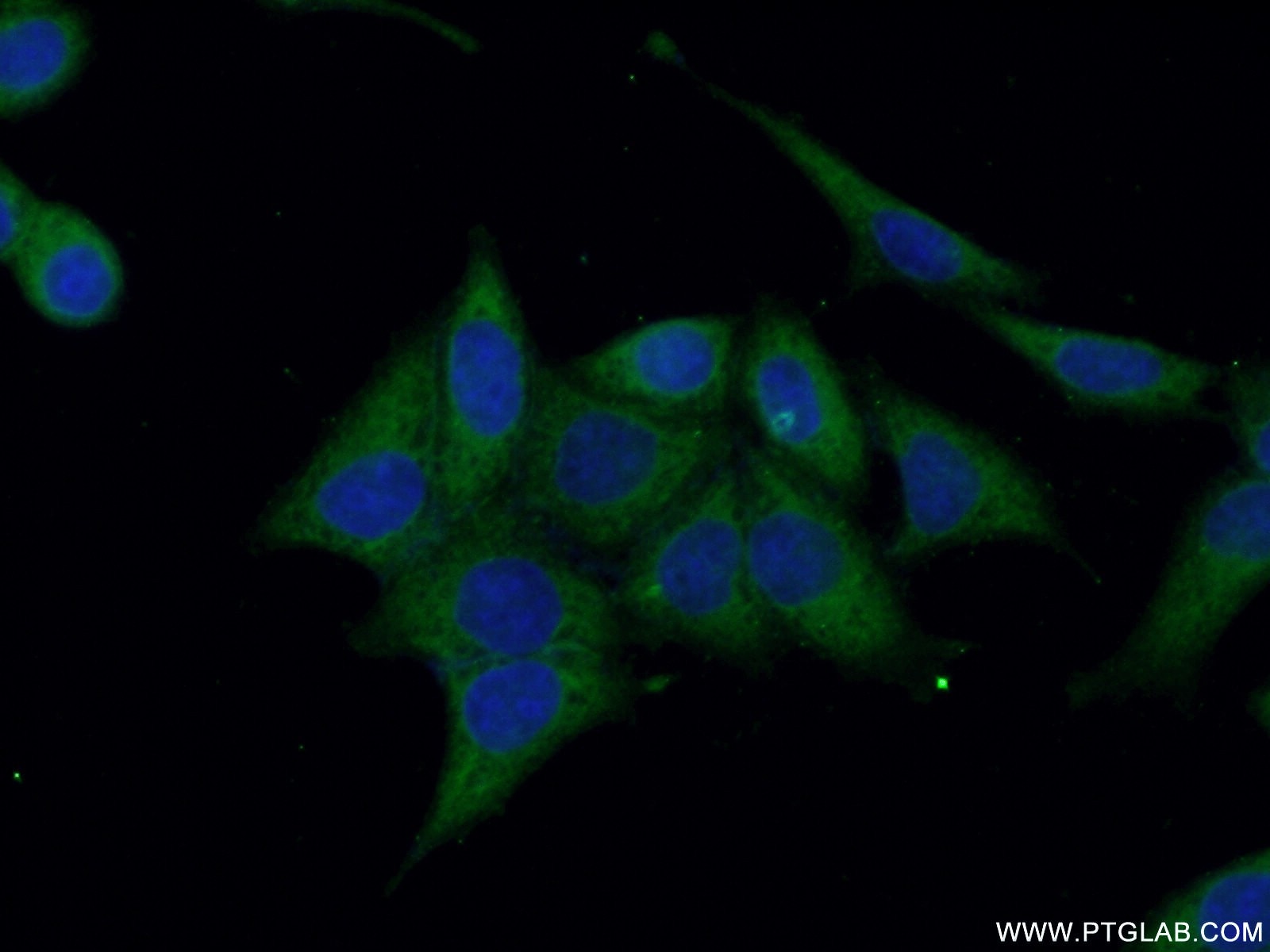- Phare
- Validé par KD/KO
Anticorps Polyclonal de lapin anti-Annexin VI
Annexin VI Polyclonal Antibody for WB, IHC, IF/ICC, IP, ELISA
Hôte / Isotype
Lapin / IgG
Réactivité testée
Humain, rat, souris
Applications
WB, IHC, IF/ICC, IP, ELISA
Conjugaison
Non conjugué
N° de cat : 12542-1-AP
Synonymes
Galerie de données de validation
Applications testées
| Résultats positifs en WB | cellules HeLa, cellules A549, cellules Jurkat, tissu cérébral de souris, tissu cérébral humain, tissu placentaire de souris, tissu rénal de souris |
| Résultats positifs en IP | cellules HeLa, tissu rénal de souris |
| Résultats positifs en IHC | tissu de côlon humain, tissu rénal humain, tissu testiculaire humain il est suggéré de démasquer l'antigène avec un tampon de TE buffer pH 9.0; (*) À défaut, 'le démasquage de l'antigène peut être 'effectué avec un tampon citrate pH 6,0. |
| Résultats positifs en IF/ICC | cellules HeLa |
Dilution recommandée
| Application | Dilution |
|---|---|
| Western Blot (WB) | WB : 1:1000-1:4000 |
| Immunoprécipitation (IP) | IP : 0.5-4.0 ug for 1.0-3.0 mg of total protein lysate |
| Immunohistochimie (IHC) | IHC : 1:50-1:500 |
| Immunofluorescence (IF)/ICC | IF/ICC : 1:50-1:500 |
| It is recommended that this reagent should be titrated in each testing system to obtain optimal results. | |
| Sample-dependent, check data in validation data gallery | |
Applications publiées
| KD/KO | See 2 publications below |
| WB | See 13 publications below |
| IHC | See 3 publications below |
| IF | See 4 publications below |
| IP | See 1 publications below |
Informations sur le produit
12542-1-AP cible Annexin VI dans les applications de WB, IHC, IF/ICC, IP, ELISA et montre une réactivité avec des échantillons Humain, rat, souris
| Réactivité | Humain, rat, souris |
| Réactivité citée | rat, Humain, souris |
| Hôte / Isotype | Lapin / IgG |
| Clonalité | Polyclonal |
| Type | Anticorps |
| Immunogène | Annexin VI Protéine recombinante Ag3263 |
| Nom complet | annexin A6 |
| Masse moléculaire calculée | 673 aa, 76 kDa |
| Poids moléculaire observé | 67 kDa |
| Numéro d’acquisition GenBank | BC017046 |
| Symbole du gène | Annexin VI |
| Identification du gène (NCBI) | 309 |
| Conjugaison | Non conjugué |
| Forme | Liquide |
| Méthode de purification | Purification par affinité contre l'antigène |
| Tampon de stockage | PBS with 0.02% sodium azide and 50% glycerol |
| Conditions de stockage | Stocker à -20°C. Stable pendant un an après l'expédition. L'aliquotage n'est pas nécessaire pour le stockage à -20oC Les 20ul contiennent 0,1% de BSA. |
Informations générales
ANXA6, also called CBP68, or 67 kDa calelectrin, belongs to a family of calcium-dependent membrane and phospholipid binding proteins. Several members of the annexin family have been implicated in membrane-related events along exocytotic and endocytotic pathways. The annexin VI gene is approximately 60 kbp long and contains 26 exons. It encodes a protein of about 68 kDa that consists of eight 68-amino acid repeats separated by linking sequences of variable lengths. It is highly similar to human annexins I and II sequences, each of which contain four such repeats. Annexin VI has been implicated in mediating the endosome aggregation and vesicle fusion in secreting epithelia during exocytosis.
Protocole
| Product Specific Protocols | |
|---|---|
| WB protocol for Annexin VI antibody 12542-1-AP | Download protocol |
| IHC protocol for Annexin VI antibody 12542-1-AP | Download protocol |
| IF protocol for Annexin VI antibody 12542-1-AP | Download protocol |
| IP protocol for Annexin VI antibody 12542-1-AP | Download protocol |
| Standard Protocols | |
|---|---|
| Click here to view our Standard Protocols |
Publications
| Species | Application | Title |
|---|---|---|
Adv Sci (Weinh) Isolation and Comprehensive Analysis of Cochlear Tissue-Derived Small Extracellular Vesicles | ||
J Extracell Vesicles Distinguishing functional exosomes and other extracellular vesicles as a nucleic acid cargo by the anion-exchange method. | ||
Oncotarget CD300A promotes tumor progression by PECAM1, ADCY7 and AKT pathway in acute myeloid leukemia. | ||
Front Cell Dev Biol Dynamic Mitochondrial Proteome Under Polyamines Treatment in Cardiac Aging. | ||
Proteome Sci A dynamic plasma membrane proteome analysis of alcohol-induced liver cirrhosis. |
Avis
The reviews below have been submitted by verified Proteintech customers who received an incentive for providing their feedback.
FH Gaurav (Verified Customer) (02-29-2024) | Very good antibody with expected band at appropriate position. Works well in TBST, 5% Skimmed milk and 3% BSA in TBST
|
